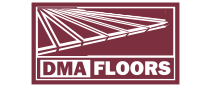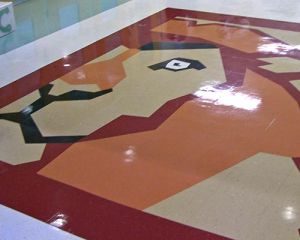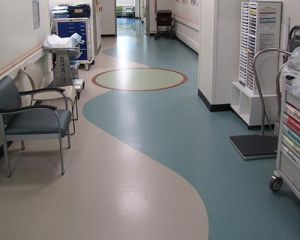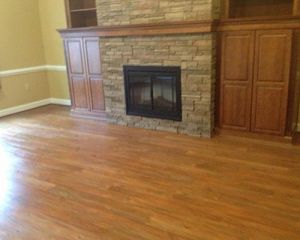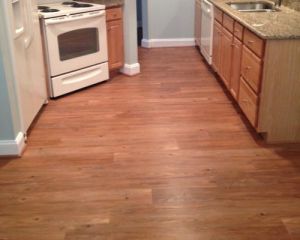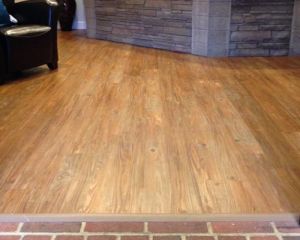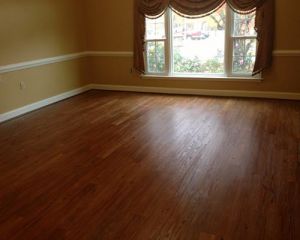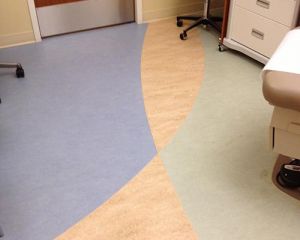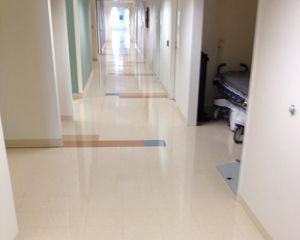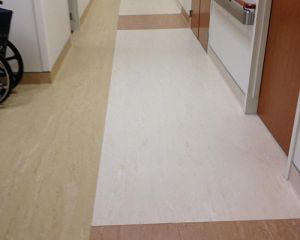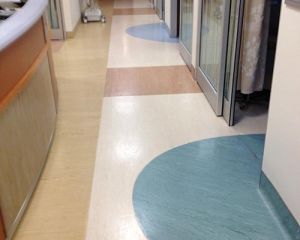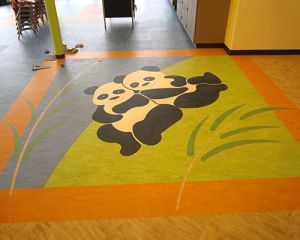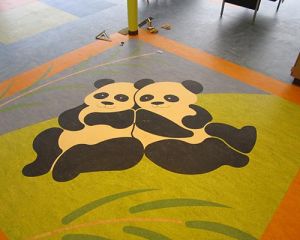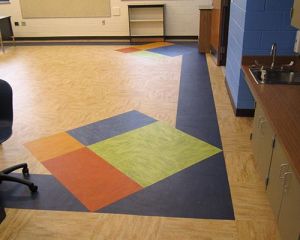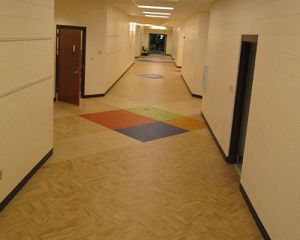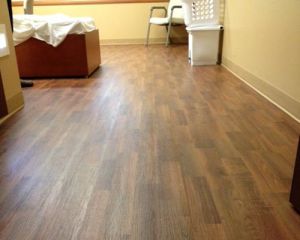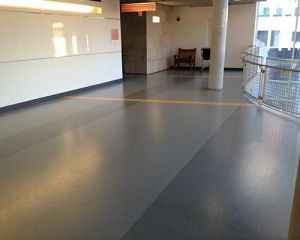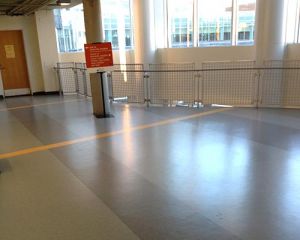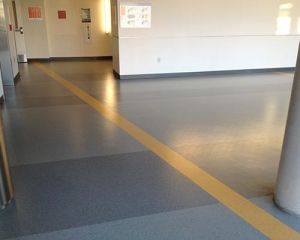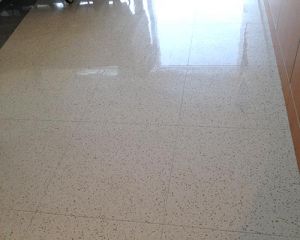Specification Considerations
- Substrate – Resilient flooring can be installed over most substrates; concrete, wood, lightweight concrete, gypsum underlayment (when properly prepared), and even over another resilient product (industry standards permit overlaying a single application of a resilient floor with another, but it should be noted, that care must be given to proper layout and prep.)
- Slab Curing – When specifying pour in place concrete slabs that are to be covered with resilient flooring, it is important to consider the curing method that you specify. Many commonly used curing compounds will not allow the resilient adhesive to bond to the concrete which can cause failures. It is important to specify wet curing methods, but if a curing compound is to be used it must meet ASTM C1315 guidelines and be properly applied without ponding, puddling, or over application.
- Slab Moisture – There are two types of moisture issues that can affect your floor; fluid and moisture vapor. Fluid is less common and typically found only when the slab lies below the surrounding water table or during flooding. Moisture vapor emission (MVE) is the most common and has become more of an issue with fast track construction schedules and changes in adhesives over the past two decades. Excessive MVE can be caused by lack of cure time under controlled conditions and excessive "water of convenience" used during the placement of the slab (this is why it is important to specify and monitor the proper water/cement ratio for your needs - ACI 211.1,) as well as improper, damaged, or non-existent vapor retarders (ASTM E1745-11.) There are options to remediate MVE.
- Floor Flatness – Resilient flooring is adhered to the floor with a very thin setting material and will thus transmit any unevenness to the surface of the installed floor. A higher level of flatness will provide a much better looking floor. ACI 302.1R recommends an FF35 for thin set flooring. MASTERSPEC® 03300 Cast In Place Concrete recommends FF20, but that is too low because sub floor inconsistencies will telegraph through at that level. SPECTEXT® 03346 Concrete Floor Finishing recommends minimum of FF75 under glossy resilient finishes, which is extremely high and difficult to attain. Industry experts agree that a reading between FF35 and FF40 is adequate. Failure to provide an adequately flat floor can lead to extensive patching, skimming and leveling and an increase in installation cost.
- Cracks – Cracks in the substrate should be stabilized to prevent telegraphing through the finish.
- Saw/Control Joints – Saw joints/control joints should be addressed by filling with an approved product to provide a uniform surface.
Our Work in Vinyl / Rubber Flooring
